METAL GEAR SOLID
Metal Gear Solid is a stealth action video-game directed by Hideo Kojima. The game was developed by Konami Computer Entertainment Japan and first published in 1998 for the PlayStation. It was well-received critically and commercially, shipping more than six million copies (being the eighth best-selling game on the PlayStation), and scoring an average metascore of 94 out of 100 on Metacritic. It is widely considered to be one of the greatest and most important games of all time, and is heralded as the game that made the stealth genre popular. It is the third canonical title released in the Metal Gear series, being a sequel of Metal Gear 2: Solid Snake.
The commercial success of Metal Gear Solid prompted Konami to enhance and re-release the game for the PlayStation and Windows PC under the title Metal Gear Solid: Integral; a remake, Metal Gear Solid: The Twin Snakes was later released for the Nintendo GameCube.
During a training mission in late February 2005 on Shadow Moses, a remote island off the coast of Alaska containing a nuclear weapons facility, FOXHOUND and the Next-Generation Special Forces rebelled against the United States Government, under the command of Liquid Snake. Their target was the advanced weapon system Metal Gear REX, a gigantic robotic weapons platform with worldwide nuclear strike capabilities. Their demand was the body of the greatest soldier who ever lived, Big Boss, which, through gene therapy, they could use to create an army of ultimate soldiers.
With the safety of the entire world at stake, at the request of the Secretary of Defense, Colonel Roy Campbell, the former commander of FOXHOUND, summoned Solid Snake out of retirement for one last solo covert operation to stop Liquid
HEROE

Solid Snake
Special Operations Soldier
"The Man Who Makes the Impossible Possible"
MAIN CHARACTERS

Roy Campbell
FOXHOUND Colonel
"Close friend of Solid Snake, and the biological father of Meryl Silverburgh"

Dr. Naomi Hunter
Medical chief of FOXHOUND
"Geneticist who specialized in nanotechnology-based gene therapy"
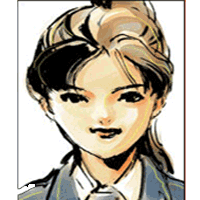
Mei Ling
Chinese-American data analyst
"Radio support team during the Shadow Moses Incident"
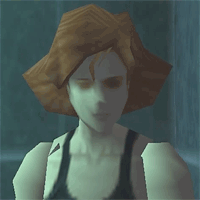
Meryl Silverburgh
Roy Campbell biological daughter
"Well-known due to her involvement in the Shadow Moses Incident"
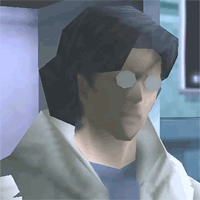
Dr. Hal Emmerich
Chief engineer of Metal Gear REX
"Hal's chosen nickname was derived from the Japanese animation convention Otakon"
Black Project
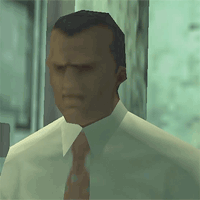
Donald Anderson
The chief of DARPA
"Supporting the development of Metal Gear REX. Impersonated by Decoy Octopus"

Kenneth Baker
Former president of ArmsTech
"Baker's company initiated the development of Metal Gear REX"
FOXHOUND
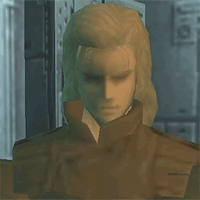
Liquid Snake
Leader of FOXHOUND during the Shadow Moses Incident
"Cloned from Big Boss's DNA as part of the Les Enfants Terribles"
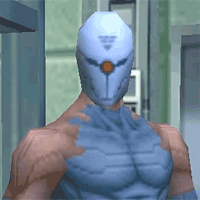
Gray Fox
Mercenary & FOXHOUND Former
"The only operative in FOXHOUND to achieve the codename Fox"

Revolver Ocelot
Russian-American operative of FOXHOUND
"A master of interrogation and a formidable gunfighter"
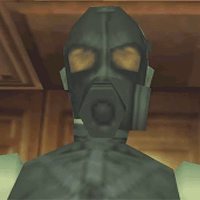
Psycho Mantis
Psychic member of FOXHOUND
"Wore a special gas mask to help prevent people's thoughts from forcing their way into his mind"

Vulcan Raven
Member of FOXHOUND who participated in the unit's revolt on Shadow Moses Island
"Was a shaman and was raised in the cold state of Alaska"
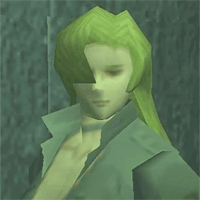
Sniper Wolf
Highly skilled sharpshooter
"Capable of waiting for her targets for days, even weeks, without eating or moving."
Hideo Kojima originally planned to release the third Metal Gear game, Metal Gear 3, for the 3DO Interactive Multiplayer in 1994. While producing the 3DO version of his adventure game Policenauts, concept art by illustrator Yoji Shinkawa of Solid Snake, Meryl Silverburgh, the latter also appears in Policenauts, and the FOXHOUND team, were included in the Policenauts: Pilot Disk preceding the release of the full 3DO game in 1995. However, due to the declining support for the 3DO, development of the game was shifted to the PlayStation shortly after the 3DO version of Policenauts was released. Part of the reason why Kojima wanted to do a sequel to Metal Gear was because it was his first game when he joined Konami, so it had a special place for him, as well as exploring further the concepts of stealth that Metal Gear brought to light, with the PlayStation giving him the opportunity to do so. The plot point of a renegade American special forces unit taking control of a nuke on US soil was originally meant to be the plotline for Metal Gear 2: Solid Snake, although Kojima had nixed it during that game's development due to believing it to be too unrealistic. He ultimately used it for Metal Gear Solid largely due to the growing changes in society in the aftermath of the Cold War.
Kojima decided to re-title the game as Metal Gear Solid. He did this because he believed that the first two MSX2 games weren't well known at the time. In fact, he initially intended to remake Metal Gear altogether before ultimately deciding to do a sequel instead. According to Kojima, the "Solid" in the title has three meanings: a reference of Solid Snake, the game's use of 3D graphics, and Konami's rivalry with Square. In addition, he also stated that, while similar in some respects to the then-recent release of the Capcom game Resident Evil in terms of tension-related gameplay, he indicated that Metal Gear Solid would give a different take to the heart-racing gameplay. He also indicated that prior projects of his such as Policenauts and Snatcher acted as an inspiration for the more drama-focused aspects of the game.
Development for Metal Gear Solid began in mid 1995 with the intent of creating the "best PlayStation game ever." Developers aimed for accuracy and realism while making the game enjoyable and tense. In the early stages of development, a SWAT team educated the developers with a demonstration of vehicles, weapons and explosives. Kojima stated that "if the player isn't tricked into believing that the world is real, then there's no point in making the game." To fulfill this, adjustments were made to every detail, such as individually designed desks.
Kojima created the characters of Metal Gear Solid; modifications and mechanics were made by conceptual artist Shinkawa. The characters were completed by polygonal artists using pencil drawings and clay models by Shinkawa. The designers would sometimes use Lego pieces to put the levels together.
Kojima wanted greater interaction with objects and the environment, such as allowing the player to hide bodies in a storage compartment. Additionally, he wanted "a full orchestra right next to the player"; a system which made modifications to the currently playing track, instead of switching to another pre-recorded track. Although these features could not be achieved, they were implemented in Metal Gear Solid 2: Sons of Liberty.
Metal Gear Solid was revealed to the public at E3 1997 as a short video. It was later playable for the first time at the Tokyo Game Show in 1998 and officially released the same year in Japan with an extensive promotional campaign. Television and magazine advertisements, in-store samples, and demo giveaways contributed to a total of US$8 million in promotional costs.
During development, to promote the game's release in various gaming magazines, Shinkawa developed a two-page comic promoting the game. It featured Solid Snake having an encounter with Revolver Ocelot, telling the latter to go to Hell as he points his gun at him. Ocelot then replies that Hell if anything is already coming to their current location. Snake then leaves, although not before sarcastically laughing and telling Ocelot to get stuffed as the narration quizzically asks about the Gates of Heaven. Meanwhile, Jim Houseman is discussing with two men as the narration asks what Metal Gear is, with Mei Ling asking if Snake is okay.
Nearing its North American release, one of the first commercials depicted a soldier doing basic, kindergarten-level "rigorous training" for a mission that was supposed to be top secret. When the accompanying soldier questions whether the tests are too easy for the soldier, the commander reminds him that he's prepping him for a suicide mission. The commercial then ends with Snake apparently being killed by Vulcan Raven's tank. The Metal Gear Solid Facebook page, when uncovering this ad in June 29, 2012, pointed out that, had Snake's training been anything like the soldier in the commercial, he most likely would never have made it beyond the docking area of Shadow Moses.

